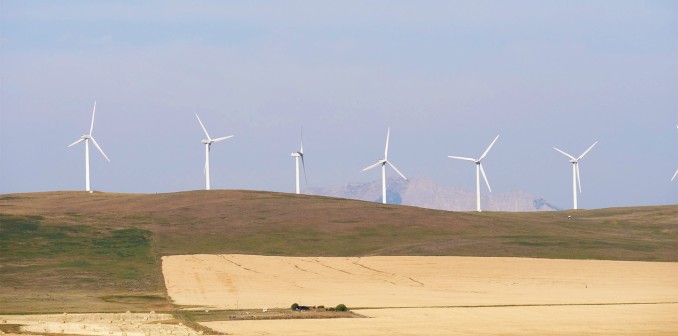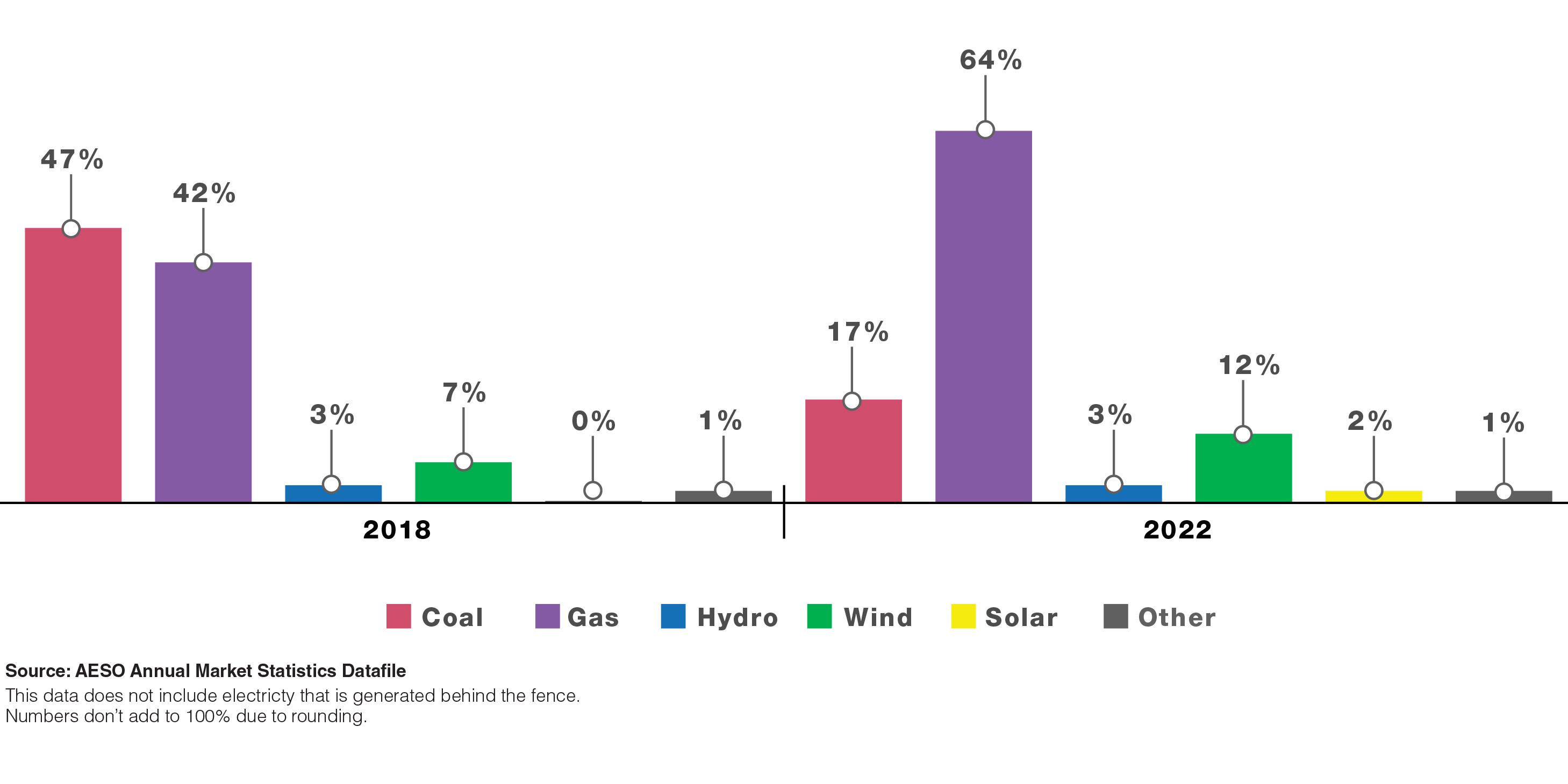Alberta’s Power System in Transition
Alberta’s power system is undergoing the biggest transformation in its 100-plus year history. The province completed its coal-to-gas transition with the last coal-fired generator converting to gas in June 2024, marking a key milestone in Alberta's energy transition.
Offsetting the phase-out of coal are equally large increases in natural gas as a fuel source, along with renewable energy such as wind and solar. In fact, Alberta now leads all other provinces in growth in wind and solar energy.
-

Alberta’s power system is changing. Rapidly.
The following graphics depict the transformation now under underway.
-
Industrial Activity Drives Alberta’s Power Demand

Alberta is home to more than four million people, but residential power consumption accounts for only about one-fifth of all electricity demand in the province. Industrial demand accounts for nearly half of Alberta’s power demand.
In the northwest region, electricity consumption comes from industrial activities such as pulp and paper mills, conventional oil and gas processing and condensates production. In the northeast region, the oil sands industry accounts for the majority of electricity consumption, and the industry has been a major factor in overall power demand growth in the province over the past two decades.
In the urban regions of Edmonton and Calgary, electricity consumption is split between residential, commercial and industrial activities. In central and southern Alberta, the economic diversity of these regions is reflected by demand from multiple industrial and commercial activities including pipelines, natural gas processing, manufacturing, farming and agriculture, meat and agri-food processing, and tourism and hospitality.
-
Alberta’s Fast-Evolving Supply Mix

Alberta’s supply mix for electricity generation is changing quickly, underlined by the phase-out of coal as a fuel source. In 2022, coal-fired generation provided approximately 17 per cent of net-to-grid power in the province (excluding behind-the-fence generation), down from 47 per cent in 2018.
Offsetting this reduction were increases in natural gas and renewables. In 2022, pure gas-generation technologies delivered approximately 64 per cent of net-to-grid generation, up from 42 per cent in 2018. Meanwhile, renewable power generation, including hydro, provided 17 per cent of Alberta’s net-to-grid generation, up from 10 per cent in 2018. Importantly, 2022 marked the first year that renewables provided more net-to-grid power than coal on an annual basis.
-
Renewables are on the Rise

Wind and solar generation are growing by leaps and bounds in Alberta. According to the Canadian Renewable Energy Association, Western Canada in 2022 accounted for 98 per cent of Canada’s total growth in wind and solar, with Alberta adding 1,391 MW and Saskatchewan adding 387 MW of installed capacity. The AESO anticipates renewables will comprise 30 per cent of supply in the 2024-2026 timeframe.
Alberta wind facts
In 2022, 10 new wind facilities, with a combined capacity of 1,349 MW, came online. This increased the total capacity for wind to 3,618 MW and represented 20 per cent of the total installed generation capacity in Alberta. In 2022, wind supplied approximately 12 per cent of Alberta’s net-to-grid generation.
Alberta solar facts
In 2022, 17 new solar farms joined the generation fleet and one facility was uprated, adding 402 MW of new capacity to the grid. This increased the total capacity for solar to 1,138 MW and represented six per cent of the total installed generation capacity in Alberta. In 2022, solar supplied approximately two per cent of Alberta’s net-to-grid generation.
-
Continued Growth in Renewables Anticipated

Blessed with ample wind and solar resources, and supported by the province’s competitive electricity market, Alberta is attracting significant private investment in renewables generation and energy storage projects, estimated at more than $4 billion since 2019.
As shown in this chart, 12,600 MW of solar capacity, 9,100 MW of wind and 5,556 MW of energy storage are either under construction, have received approval by the Alberta Utilities Commission (AUC) or been announced by project proponents.
The units that have received AUC approval may be more likely to be built versus those that have been announced, as participants have moved through more steps of the development process. However, as regulations become clearer and the potential of corporate power purchase agreements (PPAs) are realized, there may be a greater incentive to advance many of the announced projects into further stages of the development cycle.
-
Steady Reductions in GHG Emissions Achieved

Greenhouse gas emissions from Alberta’s power sector have declined by more than 40 per cent since 2005. This reduction is being driven by the shift away from coal, the increase in natural gas-fired generation and continued growth in renewables.
The AESO’s Net-Zero Emissions Pathways report, published in June 2022, forecasts continued significant reductions in greenhouse gas emissions from Alberta’s power sector by 2035. The report models different scenarios of decarbonization, with the most conservative outlook projecting annual emissions of 17.7 Mt under the 2021 Long-Term Outlook, compared to 3.8 Mt under the most aggressive scenario modelled in the Net-Zero report.
